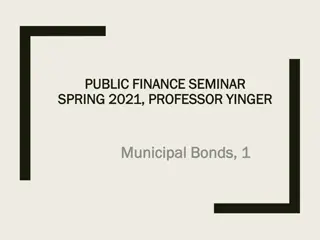Understanding Chemistry: Exploring Elements, Matter Phases, Bonds, Conservation, and Nuclear Structure
Explore the world of chemistry through studying atomic structure, matter phases, bonding of atoms, conservation of matter, and nuclear structure changes. Use the Periodic Table to analyze elements, understand properties of compounds, investigate chemical reactions, and assess nuclear energy applications.
Download Presentation

Please find below an Image/Link to download the presentation.
The content on the website is provided AS IS for your information and personal use only. It may not be sold, licensed, or shared on other websites without obtaining consent from the author. Download presentation by click this link. If you encounter any issues during the download, it is possible that the publisher has removed the file from their server.
E N D
Presentation Transcript
SPS1 Obtain, evaluate, and communicate information from the Periodic Table to explain the relative properties of elements based on patterns of atomic structure. SPS1a Develop and use models to compare and contrast the structure of atoms, ions and isotopes. SPS1b Analyze and interpret data to determine trends of the following: number of valence electrons, types of ions formed by main group elements, location and properties of metals, nonmetals, and metalloids, phases at room temperature. SPS1c Use the Periodic Table as a model to predict the above properties of main group elements.
SPS5 Obtain, evaluate, and communicate information to compare and contrast the phases of matter as they relate to atomic and molecular motion. SPS5a Ask questions to compare and contrast models depicting the particle arrangement and motion in solids, liquids, gases, and plasmas. SPS5b Plan and carry out investigations to identify the relationships among temperature, pressure, volume, and density of gases in closed systems.
SPS2 Obtain, evaluate, and communicate information to explain how atoms bond to form stable compounds. SPS2a Analyze and interpret data to predict properties of ionic and covalent compounds. SPS2b Develop and use models to predict formulas for stable, binary ionic compounds based on balance of charges. SPS2c Use the International Union of Pure and Applied Chemistry (IUPAC) nomenclature for translating between chemical names and chemical formulas.
SPS3 Obtain, evaluate, and communicate information to support the Law of Conservation of Matter. SPS3a Plan and carry out investigations to generate evidence supporting the claim that mass is conserved during a chemical reaction. SPS3b Develop and use a model of a chemical equation to illustrate how the total number of atoms is conserved during a chemical reaction.
SPS4 Obtain, evaluate, and communicate information to explain the changes in nuclear structure as a result of fission, fusion and radioactive decay. SPS4a Develop a model that illustrates how the nucleus changes as a result of fission and fusion. SPS4b Use mathematics and computational thinking to explain the process of half-life as it relates to radioactive decay. SPS4c Construct arguments based on evidence about the applications, benefits, and problems of nuclear energy as an alternative energy source.
SPS6 Obtain, evaluate, and communicate information to explain the properties of solutions. SPS6a Develop and use models to explain the properties (solute/solvent, conductivity, and concentration) of solutions. SPS6b Plan and carry out investigations to determine how temperature, surface area, and agitation affect the rate solutes dissolve in a specific solvent. SPS6c Analyze and interpret data from a solubility curve to determine the effect of temperature on solubility. SPS6d Obtain and communicate information to explain the relationship between the structure and properties (e.g., pH, and color change in the presence of an indicator) of acids and bases. SPS6e Plan and carry out investigations to detect patterns in order to classify common household substances as acidic, basic, or neutral.
SPS8 Obtain, evaluate, and communicate information to explain the relationships among force, mass, and motion. SPS8a Plan and carry out an investigation to analyze the motion of an object using mathematical and graphical models. SPS8b Construct an explanation based on experimental evidence to support the claims presented in Newton s three laws of motion. SPS8c Analyze and interpret data to identify the relationship between mass and gravitational force for falling objects. SPS8d Use mathematics and computational thinking to identify the relationships between work, mechanical advantage, and simple machines.
SPS7 Obtain, evaluate, and communicate information to explain transformations and flow of energy within a system. SPS7a Construct explanations for energy transformations within a system. SPS7b Plan and carry out investigations to describe how molecular motion relates to thermal energy changes in terms of conduction, convection, and radiation. SPS7c Analyze and interpret specific heat data to justify the selection of a material for a practical application (e.g., insulators and cooking vessels). SPS7d Analyze and interpret data to explain the flow of energy during phase changes using heating/cooling curves.
SPS9 Obtain, evaluate, and communicate information to explain the properties of waves. SPS9a Analyze and interpret data to identify the relationships among wavelength, frequency, and energy in electromagnetic waves and amplitude and energy in mechanical waves. SPS9b Ask questions to compare and contrast the characteristics of electromagnetic and mechanical waves. SPS9c Develop models based on experimental evidence that illustrate the phenomena of reflection, refraction, interference, and diffraction. SPS9d Analyze and interpret data to explain how different media affect the speed of sound and light waves. SPS9e Develop and use models to explain the changes in sound waves associated with the Doppler Effect.
SP10 Obtain, evaluate, and communicate information to explain the properties of and relationships between electricity and magnetism. SP10a Use mathematical and computational thinking to support a claim regarding relationships among voltage, current, and resistance. SP10b Develop and use models to illustrate and explain the conventional flow (direct and alternating) of current and the flow of electrons in simple series and parallel circuits. SP10c Plan and carry out investigations to determine the relationship between magnetism and the movement of electrical charge.























